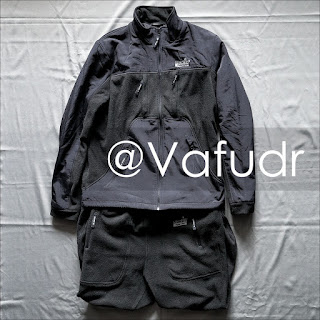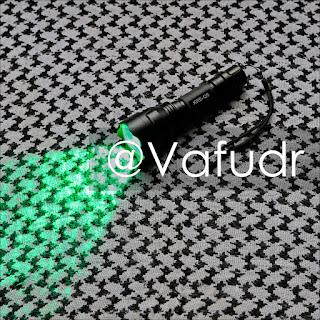By now, we have all heard of the concept of “being the gray man”. This concept advocates blending in with your environment, and dressing in a manner that does not attract any undesired attention.
...
Avoiding Identification
Truly experienced law enforcement, military and security professionals can spot each other a mile away. Often the giveaways are in the clothing and personal accessories that we choose. Watches, shoes and belts are accessories that are often overlooked by those attempting to be “Gray”. Wearing Soloman’s or Merrel’s, a
Suunto/Garmin/Pathfinder watch and an Ares Gear/
511, or another tactical belt is not being gray. Each of those accessories, gives up information about you, that you say you are trying to conceal.
“Your Khul pants and button-down outdoor shirts are not making me think you are going on a hike.”
Dressing like a REI catalog model isn’t fooling anyone anymore either. Your Khul pants and button-down outdoor shirts are not making me think you are going on a hike. They are letting me know that you are likely someone in the security/LE/Mil profession and that information in and of itself tells me a lot about you. It tells me that you may be carrying a weapon, or you may be currently on task. It tells me that you may be capable of handling yourself more than the average person. As a bad guy, it tells me that you may be a threat to me and therefore I am paying more attention to you not less, as you perhaps you intended. All of this information is information that a true “Gray Man” would want to conceal.
Shades of Gray?
Does it even matter? For most of us, the idea of being a gray man is largely irrelevant. Unless you are working in a covert profession, where being outed puts you in danger or compromises your objective, there is really no need to be completely “Gray”. Someone seeing you at the airport with your Solomans,
Suunto and your Vertx backpack, probably doesn’t put you in any real danger, but it does put you on my radar as a potential asset should things go awry. If your goal is to conceal your true agenda and your capabilities, then being a true “Gray Man” is really much simpler then we are making it.
...
The Value of Being the Gray Man
A surveillance professional is someone paid to obtain information about others through hours of observation, both static and mobile. If I set up to observe my target in a 511 tactical tuxedo, I will stand out like a sore thumb, and thus detract from my abilities to provide the services for which I was retained. On the other hand, if I were to dress in slacks, shoes and a button-down shirt (tucked in), I could probably move around most places quite freely, without attracting any undesired attention. It’s important to remember that if you are truly trying to remain “Gray”, it will likely require a departure from your normal style. Dressing for the environment you will be operating in requires effort, and often means dressing in a manner that contradicts your day to day attire.
Practical Application
Going to a business meeting as an EP professional with a client? Dress like the client. Suit, tie, appropriate footwear, belt and watch to match (can be selected for comfort but still non-tactical). Leave the G shock at home and go with something more appropriate for the business setting that doesn’t stand out. Metal or leather bands with analog-style watches are a good start in most cases. Even something as minor as wearing a rubber wedding ring vs a real one can be a tell that I am someone who is there for security purposes.
“If everyone is wearing stylish, modern sunglasses and I am wearing wrap-around Oakley’s, guess who stands out?”
If you’re carrying a bag with support equipment (medical, AED, spare ammunition, batteries etc.), then select a briefcase that doesn’t advertise itself as tactical or covert. Buy a regular leather briefcase and modify the inside to meet your requirements. I have modified more bags than I can count, and none of them look any different from the outside. If everyone at the office carries brown leather messenger style bags, then that’s what I want. If everyone is wearing stylish, modern sunglasses and I am wearing wrap-around Oakley’s, guess who stands out? Anything that makes me stand out from the baseline makes me more likely to be identified as the security guy in the room. If my goal is to blend in, then I need to make a concerted effort to leave all my cop clothing and accessories at home.
Weapon Concealment
What about all the tactical toys I need to have with me? How will I conceal and carry them without my covert 511 bag and my tactical belt? We all know that if we are carrying a firearm, a belt is the foundation on which your carry system is built. If you are carrying OWB then, in my opinion, you are risking exposure and defeating your “Gray Man” status. True concealment is IWB and my personal preference is AIWB. I generally use holsters that allow me to tuck my shirt in my pants over the holster if need be. This allows me to better conceal my weapon, in an environment where printing, or possible accidental exposure of the weapons, could compromise my mission.
...
Accessories for the Gray Man
Consider making good use of suit jacket pockets for things like a flat folded tourniquet or a pack of Quick Clot Combat Gauze. Flashlights and knives must also be hidden. The pocket clip sticking out is a dead giveaway and should be avoided at all costs. Consider something like the Raven Concealment Systems Pocket Shield for mounting support gear to be carried inside a pants pocket. The Phlster Flex also offers some great options for concealing spare magazines, tourniquets, flashlights and other support gear below your waistline but out of sight.
Take a look at others in the environment you are working in. Dress like everyone else. Pay special attention to details like watches, shoes, belts, sunglasses, and bags. They are often overlooked when trying to stay “Gray”. Always remember that you may still need to get physical, so wearing clothing that has some flex to it, will allow you to remain capable, without dressing like a slob. Wearing clothing that is too loose-fitting makes you look sloppy and unprofessional. Pay attention to hairstyles and facial hair of those around you. If everyone in the office is clean-shaven, then you should be too.
“Wearing clothing that has some flex to it, will allow you to remain capable, without dressing like a slob.”
Being gray is really quite simple. Establish a baseline for the environment you work in, and make sure your clothing, physical appearance, and accessories all fit that baseline. Avoid any products that tout themselves as discrete, covert, low-viz, etc. Dress like everyone else. Pay attention to detail and make sure there is nothing in your appearance or demeanor that could give away information about you that you are trying to conceal. Dressing like a fortune 500 executive and then pulling out an iPhone in a Magpul case is only going to attract undesired attention. The devil is in the details!
The Gray Man Concept. Are You Getting it Wrong?
By: Adam Scholl
Adam Scholl is a project manager for LaSorsa and Associates where he is currently serving as the Director of Operations for a large-scale executive protection project. Adam is a former law enforcement officer who served on violent crime task forces with the FBI and US Marshals. As a Sergeant, Adam was his agency’s firearms, defensive tactics, and close-quarters battle instructor. Later working for the U.S. Department of Defense as a Fieldcraft Instructor. Presently, Adam instructs Krav Maga and Brazilian Jiu Jitsu through his own company, Scholl Security Group.
Full text - The Gray Man Concept. Are You Getting it Wrong?
Концепция "Серого Человека". Вы понимаете это неправильно?



